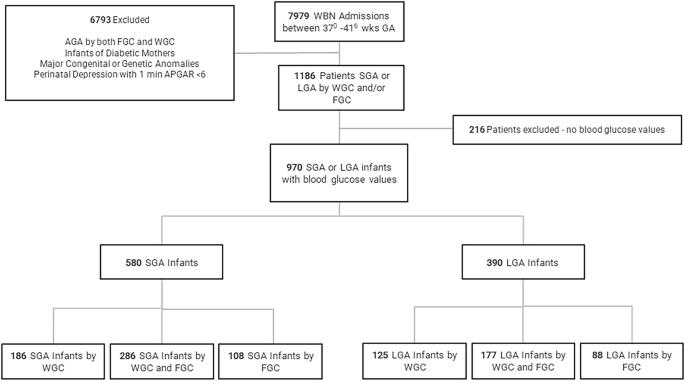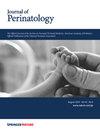The performance of growth charts in well term newborns in screening for hypoglycemia
IF 2.4
3区 医学
Q2 OBSTETRICS & GYNECOLOGY
引用次数: 0
Abstract
To compare the performance of Fenton Growth Chart (FGC) with WHO Growth Chart (WGC) to identify term infants at risk for hypoglycemia. A retrospective study of infants screened for hypoglycemia due to SGA or LGA status determined by FGC and/or WGC. Nine hundred and seventy infants were included. There was 47.7% agreement between growth charts. A total of 283 (29.2%) newborns developed hypoglycemia. Of those with hypoglycemia, 53.7% were identified by both charts. WGC was more sensitive for all categories of hypoglycemia examined; hypoglycemia (81.3% [CI 76.2–86.7] vs 72.4% [CI 66.8–77.6]), severe hypoglycemia (80.8% [CI 67.5–90.4] vs 71.2% [CI 56.9–82.9]), and hypoglycemia requiring NICU transfer (88.5% [CI 69.9–97.6] vs 65.4% [CI 44.2–82.8). The FGC was more specific for all hypoglycemia categories. There was poor agreement between WGC and FGC for hypoglycemia in term infants. The WGC was more sensitive in detecting hypoglycemia and was non-inferior to the FGC.

足月新生儿生长图在低血糖筛查中的作用。
目的:比较Fenton生长图(FGC)与WHO生长图(WGC)在鉴别足月儿低血糖危险中的应用价值。研究设计:对通过FGC和/或WGC确定的SGA或LGA状态筛查低血糖的婴儿进行回顾性研究。结果:纳入970例婴儿。增长率图之间的一致性为47.7%。共有283例(29.2%)新生儿出现低血糖。在低血糖患者中,53.7%通过两种图表确诊。WGC对所有类型的低血糖检查都更敏感;低血糖(81.3% [CI 76.2-86.7]对72.4% [CI 66.8-77.6]),严重低血糖(80.8% [CI 67.5-90.4]对71.2% [CI 56.9-82.9]),低血糖需要NICU转移(88.5% [CI 69.9-97.6]对65.4% [CI 44.2-82.8)。FGC对所有低血糖类型都更有特异性。结论:WGC和FGC治疗足月婴儿低血糖的一致性较差。WGC对低血糖的检测更敏感,且不逊于FGC。
本文章由计算机程序翻译,如有差异,请以英文原文为准。
求助全文
约1分钟内获得全文
求助全文
来源期刊

Journal of Perinatology
医学-妇产科学
CiteScore
5.40
自引率
6.90%
发文量
284
审稿时长
3-8 weeks
期刊介绍:
The Journal of Perinatology provides members of the perinatal/neonatal healthcare team with original information pertinent to improving maternal/fetal and neonatal care. We publish peer-reviewed clinical research articles, state-of-the art reviews, comments, quality improvement reports, and letters to the editor. Articles published in the Journal of Perinatology embrace the full scope of the specialty, including clinical, professional, political, administrative and educational aspects. The Journal also explores legal and ethical issues, neonatal technology and product development.
The Journal’s audience includes all those that participate in perinatal/neonatal care, including, but not limited to neonatologists, perinatologists, perinatal epidemiologists, pediatricians and pediatric subspecialists, surgeons, neonatal and perinatal nurses, respiratory therapists, pharmacists, social workers, dieticians, speech and hearing experts, other allied health professionals, as well as subspecialists who participate in patient care including radiologists, laboratory medicine and pathologists.
 求助内容:
求助内容: 应助结果提醒方式:
应助结果提醒方式:


